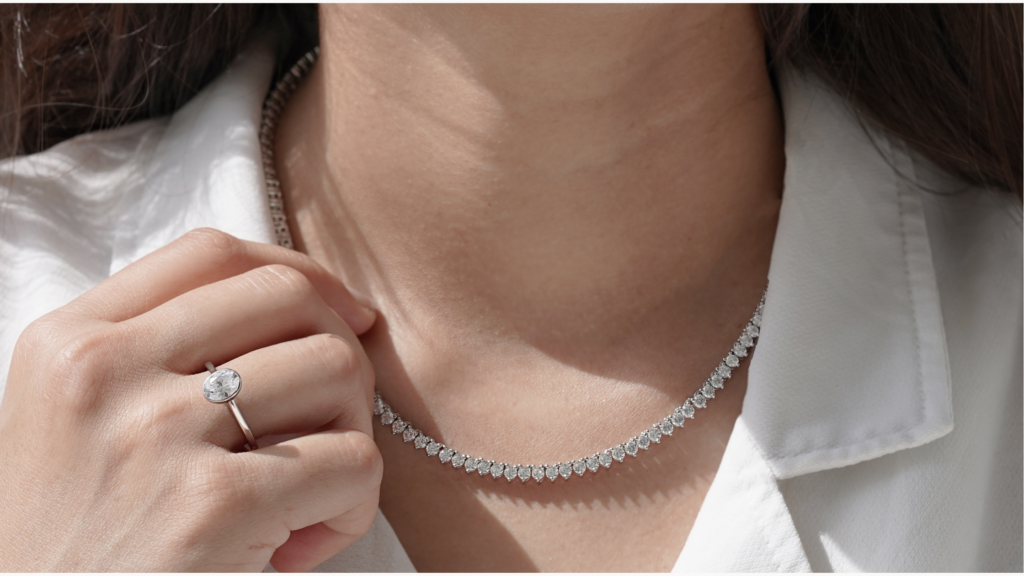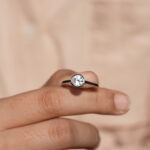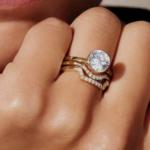THE ART OF CUSTOM JEWELRY: HOW 3D CAD IS REVOLUTIONIZING DESIGN

Introduction: The Evolution of Jewelry Design
Jewelry is more than just an accessory—it’s a reflection of personal style, emotions, and even life’s most cherished moments. Whether it’s an engagement ring, a family heirloom, or a one-of-a-kind statement piece, custom jewelry has always held a special place in people’s hearts.
Traditionally, creating custom jewelry was an intensive, time-consuming process. Designers would start with hand-drawn sketches, followed by wax models, which were then carved by hand. Any modifications meant starting over—making the process costly and lengthy. But thanks to technology, jewelry design has taken a giant leap forward.
Enter 3D CAD (Computer-Aided Design)—a game-changing innovation that is revolutionizing the jewelry industry. With CAD, designers can now create highly detailed digital models of jewelry, allowing for unlimited customization, precise accuracy, and faster production times. From independent jewelers to large-scale manufacturers, everyone is embracing 3D CAD to bring dream jewelry pieces to life.
So, how exactly does 3D CAD work, and why is it reshaping the way custom jewelry is designed and made? Let’s dive in.
What is 3D CAD and How Does It Work in Jewelry Design?
Imagine being able to see a photorealistic preview of your custom jewelry before it’s even made. That’s exactly what 3D CAD technology enables.
Understanding 3D CAD
3D CAD (Computer-Aided Design) is a specialized software that allows jewelry designers to create detailed, three-dimensional digital models of rings, necklaces, earrings, and more. These models can be rotated, resized, and modified in real time—making it easier to fine-tune designs before they go into production.
How the Process Works?
The process of designing jewelry using 3D CAD follows these key steps:
- Concept & Initial Design – The designer starts with an idea, often based on a client’s request or an original creative vision.
- 3D Modeling in CAD Software – Using CAD software like RhinoGold, MatrixGold, or JewelCAD, the concept is transformed into a detailed 3D model with accurate proportions, intricate engravings, and realistic gemstone settings.
- Rendering & Visualization – The software generates high-quality, photorealistic images that show how the final piece will look in different metals, finishes, and lighting conditions. This step allows clients to review and request changes before production begins.
- 3D Printing & Prototyping – Once the design is approved, the CAD file is used to create a wax or resin prototype via 3D printing. This prototype serves as the mold for casting the final piece in metal.
- Final Manufacturing & Finishing – The jewelry is cast, polished, and set with gemstones, bringing the digital vision to reality.
This digital-first approach eliminates guesswork, ensures precision, and allows for quick modifications—all of which were nearly impossible with traditional handcrafting methods.
The Evolution of Jewelry Design: From Hand Sketches to 3D CAD
Before the rise of 3D CAD, jewelry designers relied on a combination of hand-drawn sketches and wax carving. While these methods showcased the artistry of skilled craftsmen, they had several drawbacks:
- Time-Consuming Process – A single custom piece could take weeks or even months to design and refine.
- Lack of Precision – Achieving perfect symmetry and complex detailing was extremely difficult by hand.
- Limited Modifications – If a client wanted changes, the designer often had to start from scratch.
With 3D CAD, all of these limitations have been addressed. Today, jewelry designers can work faster, more accurately, and with greater creative freedom. Clients also benefit from a collaborative process, where they can visualize and adjust their designs before production begins.
Key Benefits of Using 3D CAD for Custom Jewelry Design
The impact of 3D CAD on the jewelry industry cannot be overstated. Here’s why it has become an essential tool for modern jewelry designers:
1. Unmatched Precision & Accuracy
3D CAD software ensures that every millimeter of a jewelry piece is designed with precision. Whether it’s the prong setting for a diamond or the intricate engravings on a wedding band, CAD allows for flawless execution, reducing errors and inconsistencies.
2. Realistic 3D Rendering & Visualization
One of the biggest advantages of 3D CAD is the ability to create photorealistic renderings of jewelry designs. Clients can see exactly how a ring will look in platinum versus rose gold or how a gemstone will appear in different lighting conditions. This eliminates uncertainty and helps clients make informed decisions.
3. Faster Production & Fewer Revisions
With traditional methods, modifying a design meant starting from scratch. But with CAD, changes can be made instantly. This streamlines the production process, allowing jewelers to deliver custom pieces in days rather than weeks.
4. Cost-Effective & Material Efficient
By designing digitally, jewelers reduce material waste and production costs. CAD ensures that only the necessary amount of metal and gemstones are used, making it a more sustainable and cost-effective approach.
5. Unlimited Customization
Whether a client wants a unique engagement ring with a custom engraving or a one-of-a-kind pendant with intricate filigree, CAD makes it possible to create anything imaginable. Clients can experiment with different designs, stones, and settings before finalizing their perfect piece.
How 3D CAD Enhances the Customer Experience
Custom jewelry is deeply personal, and 3D CAD makes the experience even more engaging for clients. Here’s how:
- Interactive Design Process – Clients can see and modify their jewelry designs in real time.
- Confidence in the Final Product – High-quality 3D renders remove any guesswork before production.
- More Personalization Options – Every detail, from engravings to gemstone placements, can be customized effortlessly.
By integrating 3D CAD into the custom jewelry process, designers can offer a seamless and enjoyable customer experience, ensuring that every client gets exactly what they envisioned.
The Future of Custom Jewelry with 3D CAD
As technology continues to evolve, the jewelry industry will see even more advancements in CAD design. Some exciting developments include:
- AI-Powered CAD Tools – Software that can suggest design improvements or generate custom designs based on customer preferences.
- Augmented Reality (AR) Try-Ons – Clients will soon be able to virtually try on jewelry using AR before making a purchase.
- Sustainable Jewelry Manufacturing – CAD is enabling more eco-friendly production methods by reducing waste and optimizing materials.
In the coming years, 3D CAD will continue to push the boundaries of jewelry design, making custom jewelry more accessible, precise, and innovative than ever before.
Conclusion: The Future of Jewelry is Here
Gone are the days when custom jewelry was a lengthy and uncertain process. With 3D CAD technology, designers and clients alike can enjoy a faster, more precise, and highly customizable experience. From engagement rings to heirloom pieces, CAD ensures that every jewelry piece is crafted with perfection.
At The Cad Maker, we specialize in high-quality 3D CAD jewelry designs, realistic rendering, and fast turnarounds. Whether you’re a jeweler looking for expertly crafted CAD models or a customer wanting to bring your unique vision to life, we offer professional CAD services with delivery in just 24-48 hours.
Looking for a custom jewelry design that stands out? Contact The Cad Maker today and let’s create something extraordinary together!
Leave a Reply
You May Also Enjoy:
THE ROLE OF 3D RENDERING IN CUSTOM JEWELRY DESIGN
The Cad Maker Introduction Designing custom jewelry has forever been an art. It's the fusion
-
THE ART OF CUSTOM JEWELRY: HOW 3D CAD IS REVOLUTIONIZING DESIGN
February 14, 2025 -
DESIGNING THE PERFECT RING: WHY CAD IS GAME CHANGER FOR CUSTOM JEWELRY
February 27, 2025 -
TOP MATERIALS USED IN CUSTOM RING MANUFACTURING
March 19, 2025





